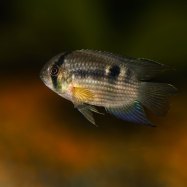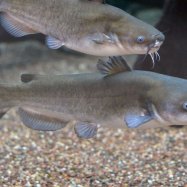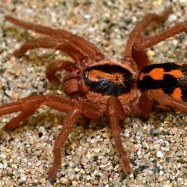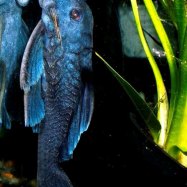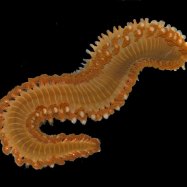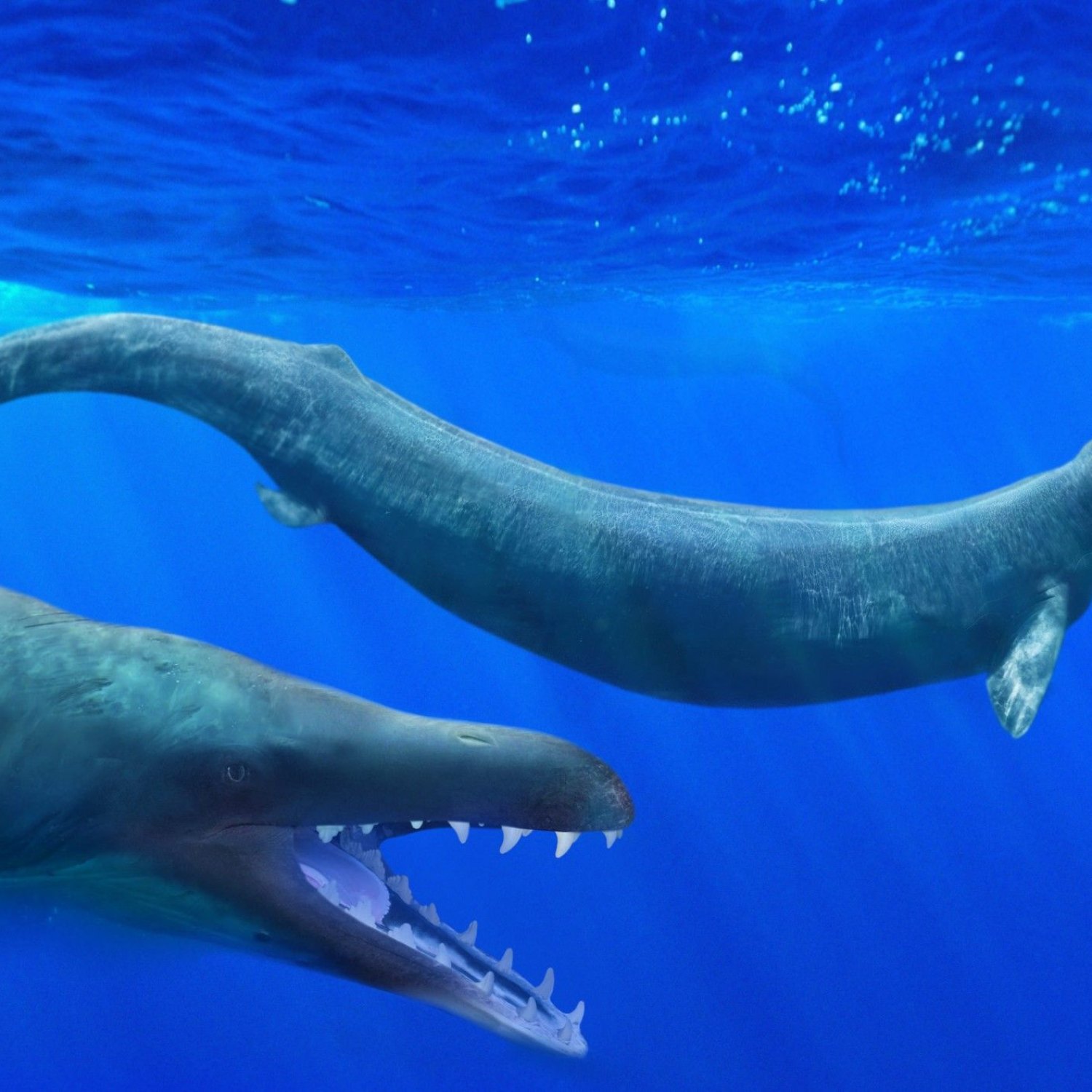
Basilosaurus
Up to 50 feet
Discover the ancient world of Basilosaurus, a serpentine-shaped creature that roamed coastal and offshore waters. With a length of up to 50 feet, this giant mammal belonged to the Basilosauridae family. Get ready to be mesmerized by this fascinating animal! #Basilosaurus #sea #creatures #mammals
Animal Details Summary:
Common Name: Basilosaurus
Kingdom: Animalia
Habitat: Marine
The Magnificent Basilosaurus: A Serpentine Wonder of the Sea
Imagine diving deep into the ocean, surrounded by the vast blue and the mysterious creatures that call it home. As you descend further, you come upon a creature unlike any other – a serpentine animal with a length of up to 50 feet. This is the Basilosaurus, a legendary creature that has captured the imagination of scientists and sea enthusiasts alike.From its impressive size to its unique anatomy, the Basilosaurus is truly an extraordinary animal Basilosaurus. In this article, we will uncover the fascinating details about this mysterious creature. So let's dive in and explore the world of the Basilosaurus.
What's in a Name
The name Basilosaurus may sound familiar to some, and that's because it comes from two Greek words – "basileos" which means king, and "sauros" which means lizard. When combined, it translates to "king lizard," although interestingly, the Basilosaurus is not a lizard at all. In fact, it is a mammal, and a very unique one at that.A Family of Its Own
The Basilosaurus belongs to a family of animals known as Basilosauridae, which was first described in 1834. At that time, scientists thought that this creature was an actual marine reptile, like a giant snake or lizard. It wasn't until 1845 that it was correctly identified as a mammal.A Step Back in Time
The Basilosaurus lived during the Eocene Epoch, which was between 56 million to 34 million years ago Barn Owl. During this time, the world was significantly warmer, and the continents were in different positions than they are today. It is believed that the Basilosaurus mainly inhabited the Tethys Sea, which was an ocean that covered a large portion of the area that is now known as the Middle East.During the Eocene Epoch, the Tethys Sea was only a few hundred meters deep. It was a shallow, warm sea that was rich in marine life, making it the perfect habitat for creatures like the Basilosaurus.
A Carnivorous Diet
The Basilosaurus was a carnivore, which means it fed on other animals to survive. Its diet consisted mainly of fish, but it was also known to hunt and feed on smaller marine mammals like whales and dolphins. Its impressive size and powerful jaws allowed it to prey on a wide variety of creatures, making it a fearsome predator of the sea.A Global Distribution
The Basilosaurus is believed to have had a worldwide distribution, with fossils being found in North America, North Africa, and even Antarctica. However, the most well-preserved fossils have been discovered in the United States and Egypt.These fossils have been found in both coastal and offshore waters, giving us a glimpse into the Basilosaurus' preferred habitat. It is believed that it was an opportunistic predator that roamed the shallow waters and made its way to deeper waters when necessary.
The Beauty of Diversity
One of the most intriguing aspects of the Basilosaurus is its varying coloration. Due to the wide distribution of its fossils, scientists have found evidence of different color patterns, ranging from dark greys and browns to lighter shades of white and beige. This diversity in coloration is believed to have helped the Basilosaurus camouflage in its environment, making it easier for it to hunt and evade predators.A Unique Body Shape
The Basilosaurus had a long, serpentine body, similar to that of a modern-day sea snake. However, its anatomy was much more complex and unique. It had a slender body with a small head and a long tail. Interestingly, its front fins were vestigial, meaning they did not serve any real purpose and were like tiny front legs.One of the most striking features of the Basilosaurus was its elongated neck, which was made up of over 50 vertebrae. This gave it a snake-like appearance and also helped it to slither through the water with ease.
The Big Question – Was it a Basilosaurus or a Zeuglodon?
In the early 1800s, when the Basilosaurus was first discovered and named, it was believed to be a marine reptile. However, in 1845, when it was correctly identified as a mammal, it was also given a new name – Zeuglodon. This was because scientists at that time believed that the Basilosaurus and the Zeuglodon were two different species.For many years, there was much confusion about whether the Basilosaurus and the Zeuglodon were two separate animals or if they were, in fact, the same creature. It wasn't until the 1970s, when more evidence and research were conducted, that it was determined that the two were the same species, and the name Basilosaurus was restored.
The Discovery of a Lifetime
The first Basilosaurus fossil was discovered in Alabama in the early 1800s, by a slave named Wash. It was only a partial skull, but it was enough to pique the interest of scientists and spark a sense of mystery and wonder about this strange and long-forgotten creature.Since then, more than 70 Basilosaurus fossils have been discovered, providing scientists with valuable information about this extinct animal. Some of these fossils are on display in museums all over the world, giving us an opportunity to admire this remarkable creature.
What Can We Learn from the Basilosaurus?
The Basilosaurus may be a long-extinct creature, but there is still so much we can learn from it. As one of the first fully marine mammals, it played a significant role in the evolution of whales and dolphins. Its unique anatomy and adaptations tell us a story of how life in the ocean has evolved over millions of years.Moreover, the Basilosaurus and other creatures like it remind us of the incredible diversity that exists in the animal kingdom. From the colors and patterns to the different habitats and feeding methods, every animal is unique and special in its way.
In Conclusion
The Basilosaurus, with its impressive size, unique anatomy, and captivating history, is a true wonder of the sea. It continues to fascinate scientists and enthusiasts who are constantly uncovering new information about this mysterious creature.From its discovery to its role in evolution, the Basilosaurus has left its mark on the world, reminding us of the fascinating creatures that have inhabited our planet over millions of years. So next time you take a dip in the ocean, remember the extraordinary serpentine creature that once roamed the warm waters, the magnificent Basilosaurus.

Basilosaurus
Animal Details Basilosaurus - Scientific Name: Basilosaurus
- Category: Animals B
- Scientific Name: Basilosaurus
- Common Name: Basilosaurus
- Kingdom: Animalia
- Phylum: Chordata
- Class: Mammalia
- Order: Cetacea
- Family: Basilosauridae
- Habitat: Marine
- Feeding Method: Carnivorous
- Geographical Distribution: North America, North Africa
- Country of Origin: United States, Egypt
- Location: Coastal and offshore waters
- Animal Coloration: Varies
- Body Shape: Serpentine
- Length: Up to 50 feet
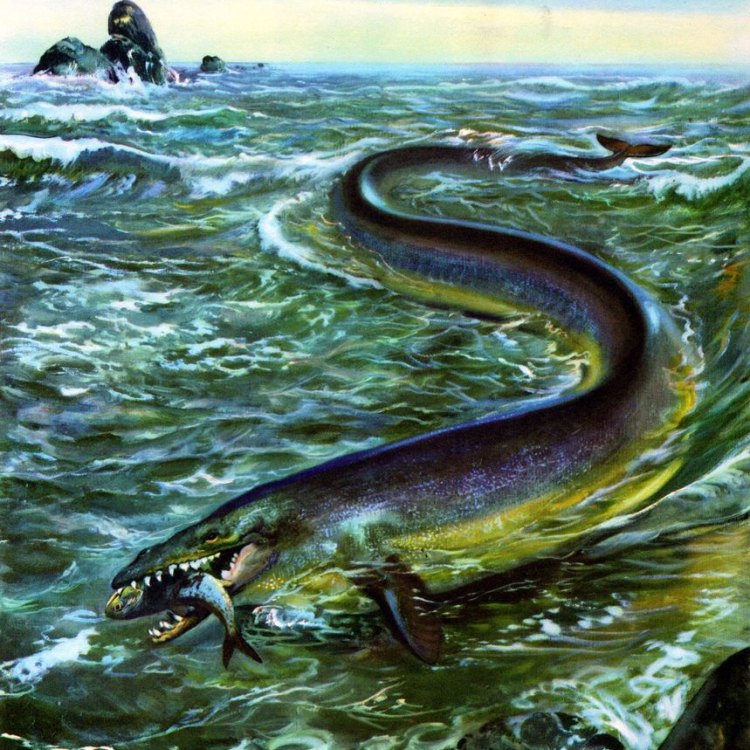
Basilosaurus
- Adult Size: Large
- Average Lifespan: Unknown
- Reproduction: Sexual
- Reproductive Behavior: Unknown
- Sound or Call: Unknown
- Migration Pattern: Unknown
- Social Groups: Unknown
- Behavior: Unknown
- Threats: Extinct
- Conservation Status: Extinct
- Impact on Ecosystem: Unknown
- Human Use: None
- Distinctive Features: Long and serpentine body
- Interesting Facts: Basilosaurus is not actually a reptile but a prehistoric whale.
- Predator: Unknown
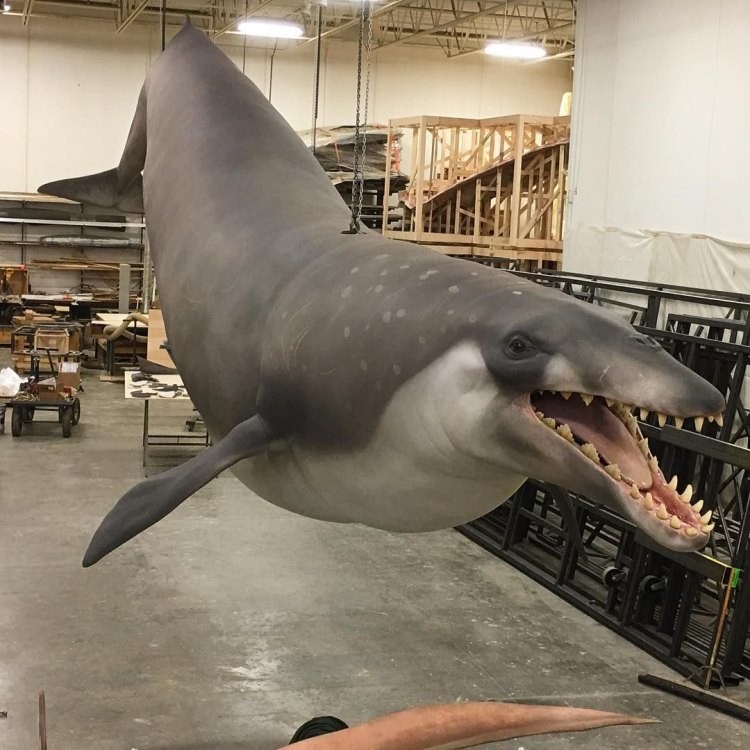
Basilosaurus
The Mighty Basilosaurus: A Journey through the Mysteries of an Extinct Giant
In the world of giant marine creatures, names like Megalodon, Mosasaurus, and Kronosaurus often come to mind. Yet, there is one majestic creature that has been often overlooked and forgotten – the Basilosaurus. This giant was not a dinosaur, nor a reptile, but an ancient whale that ruled the oceans millions of years ago.So, what makes Basilosaurus stand out from the rest? Let's delve into the unique features and mysteries of this fantastic creature PeaceOfAnimals.Com.
The Basics: Adult Size and Average Lifespan
Basilosaurus, also known as "king lizard," was a massive creature, with an average length of 50-70 feet and weighing up to 50 tons. To put that into perspective, that's about the size of a modern-day blue whale, the largest animal on earth.As for its lifespan, not much is known about it. Researchers believe that Basilosaurus had a long lifespan, given its colossal size and slow metabolism. However, due to its extinction millions of years ago, we may never know for sure.
Reproduction: A Sexual Behemoth
Basilosaurus is believed to have reproduced sexually, like modern-day whales. However, there is little information about their reproductive behavior. One theory is that they were solitary creatures, coming together only during the breeding season.The Mysteries of Sound and Migration
The oceans are full of vibrant sounds, from the calls of dolphins to the songs of humpback whales Beagle. However, the sound or call of Basilosaurus remains a mystery. Researchers have not found any evidence of sound-producing organs in its fossil remains.Another intriguing mystery is its migration patterns. Unlike modern-day whales, we have little information on the migration patterns of Basilosaurus. Some researchers believe they may have traveled long distances during breeding seasons, while others argue they may have stayed in one area throughout their lives.
The Enigma of Social Behavior
Today, many sea creatures, including whales, dolphins, and sharks, travel in social groups. However, it's unknown if Basilosaurus displayed similar behavior. Due to the lack of evidence and fossil remains, scientists can only speculate on whether these prehistoric giants were solitary creatures or traveled in groups.The Elusive Behavior and Threats to Basilosaurus
The behavior of Basilosaurus is yet another aspect that remains a mystery. As a top predator, it likely used its size and strength to hunt and catch prey. Some researchers also believe it may have been an ambush predator, waiting in the depths of the ocean for unsuspecting prey.Despite its immense size and power, Basilosaurus faced threats from other giant marine creatures, such as Megalodon and Squalodon. These predators surely caused some difficulties for Basilosaurus. However, the eventual cause of its extinction was not due to these predators but something else entirely.
Impact on the Ecosystem and Human Use
It's challenging to determine the exact impact Basilosaurus had on the ocean ecosystem. Being a top predator, it likely played a crucial role in regulating the populations of its prey. However, its extinction millions of years ago has left a significant void in the ecosystem, and its impact cannot be fully understood.As for human use, Basilosaurus has had little to no impact. Its fossils have been a source of wonder and curiosity, but it has not been used in any significant way by humans, unlike other ancient creatures like dinosaurs.
Distinguishing Features: Long and Serpentine Body
The most distinctive feature of Basilosaurus is its long and serpentine body, which resembled a giant, predatory snake. However, unlike snakes, Basilosaurus had two small front flippers and a large tail fin, which allowed it to move through the water with ease.Interesting Facts: From Reptile to Prehistoric Whale
One of the most interesting facts about Basilosaurus is that it was initially thought to be a giant marine reptile, due to similarities in its fossil structure. However, further research revealed that it was, in fact, a prehistoric whale, making it the largest known marine mammal of its time.Interestingly, Basilosaurus had hind limbs, which were believed to be remnants of its terrestrial ancestors. It also had sharp, conical teeth, which were later replaced by more blunt and rounded teeth, similar to modern-day whales.
Predator: Still a Mystery
Despite years of research and discovery, one of the most significant mysteries surrounding Basilosaurus is its predator. While we know that it was a top predator in the ocean, the exact creature that could have taken down a giant like Basilosaurus remains unknown. Perhaps one day, we will uncover this final piece of the puzzle.The Extinction of the Mighty Basilosaurus
Despite being a fierce and dominant predator, Basilosaurus met its end in the early Eocene era, approximately 34 to 40 million years ago. There are several theories as to why this massive creature went extinct, but the most widely accepted is a cooling of the Earth that disrupted the ocean's food chain.No matter the cause of its extinction, Basilosaurus remains a fascinating and elusive creature that continues to capture the imagination of researchers and enthusiasts alike. Its story is a reminder of the ever-changing nature of our planet and the wonders that once roamed its oceans.
In Conclusion
The Basilosaurus, with its impressive size, mysterious behaviors, and unanswered questions, is a true enigma of the prehistoric world. Through the evidence and research gathered over the years, we have been able to piece together a picture of this magnificent creature. However, much like the secrets of the ocean, there is still so much more waiting to be discovered about the mighty Basilosaurus.
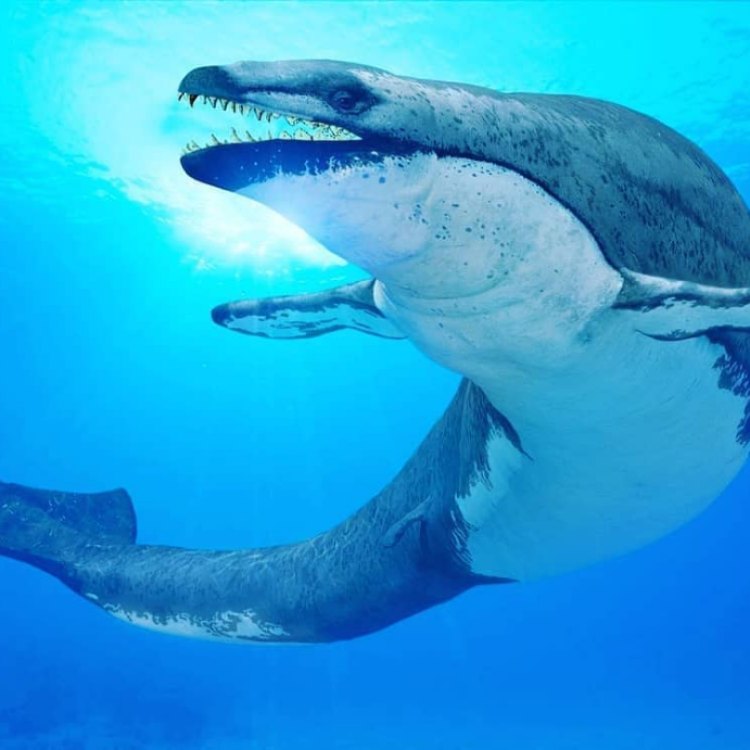
The Magnificent Basilosaurus: A Serpentine Wonder of the Sea
Disclaimer: The content provided is for informational purposes only. We cannot guarantee the accuracy of the information on this page 100%. All information provided here may change without prior notice.



